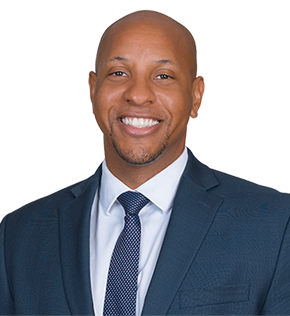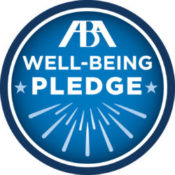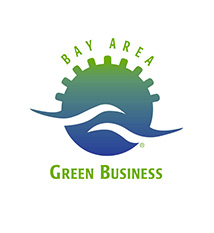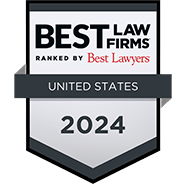PPP Loan Forgiveness
By Hoge Fenton | 05.19.2020 | Client Alerts
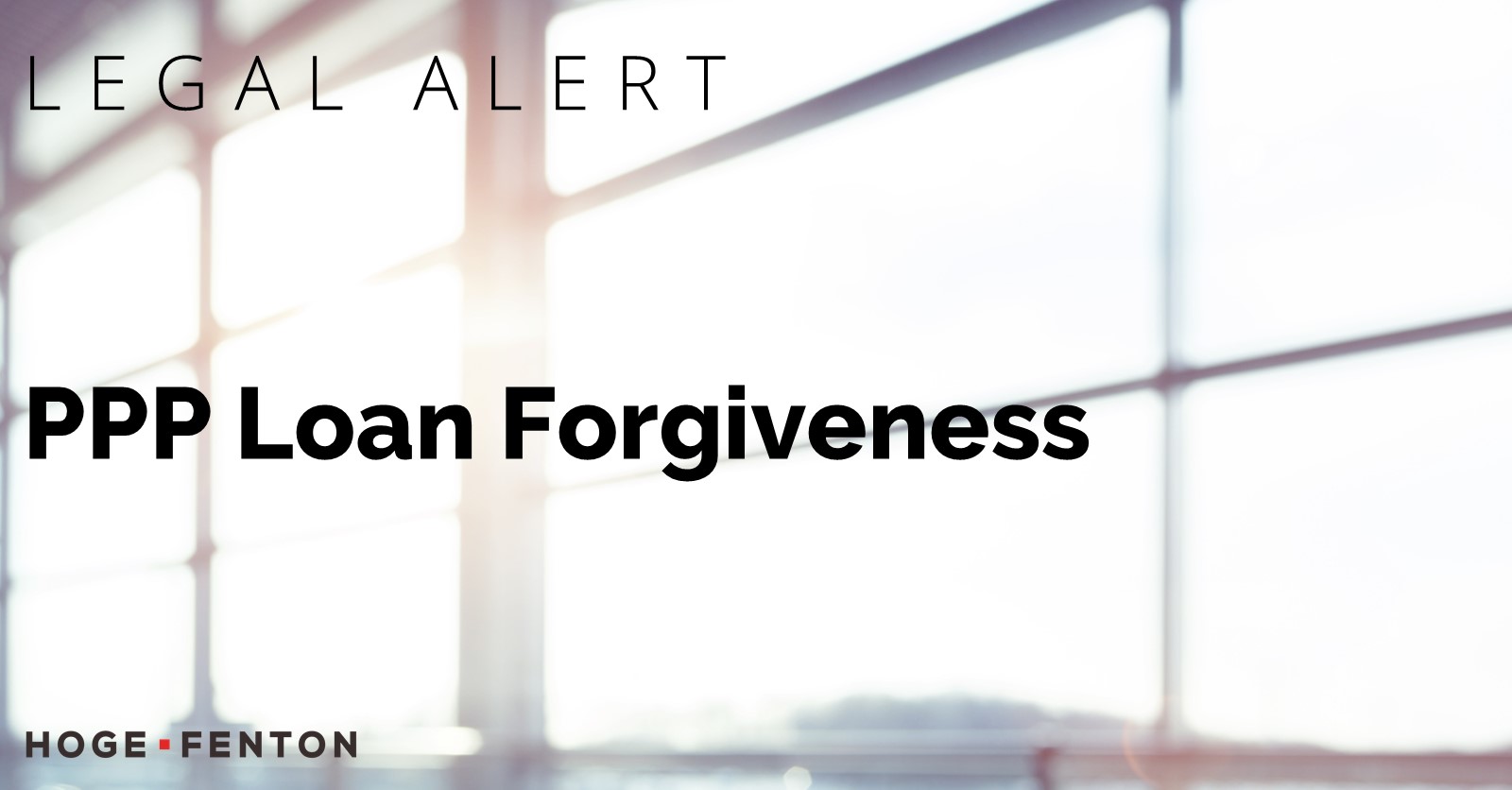
On the evening of Friday, May 15, the SBA released long-awaited guidance for borrowers looking to claim forgiveness of their Paycheck Protection Program (“PPP”) loans.
The PPP Loan Forgiveness Application provides detailed instructions for borrowers to calculate the amount of their PPP loan forgiveness. The application has four parts:
- the PPP Loan Forgiveness Calculation Form;
- PPP Schedule A;
- the PPP Schedule A Worksheet; and
- an optional PPP Borrower Demographic Information Form.
Borrowers are required to submit the Calculation Form and PPP Schedule A to their lender.
What Costs are Eligible for Forgiveness?
The SBA’s guidance provides for four broad categories of costs that are eligible for forgiveness:
- payroll costs;
- business mortgage interest payments;
- business rent or lease payments; and
- business utility payments.
In accordance with prior guidance, the SBA requires that at least 75% of the forgiven amount be attributable to payroll costs.
Calculation of Eligible Payroll Costs for Forgiveness
The SBA’s guidance allows a PPP borrower to deduct payroll costs paid or incurred during the borrower’s eight-week (56 day) “Covered Period,” which is defined as the eight-week period that begins on the date the PPP loan was disbursed, or an Alternative Payroll Covered Period.
Alternative Covered Period
The strict eight-week Covered Period may not align with a borrower’s actual pay period. In these cases, the Alternative Covered Period may be used. The Alternative Payroll Covered Period allows Borrowers with a biweekly (or more frequent) payroll schedule to choose a 56 day period that begins on the first day of their first pay period following their PPP Loan Disbursement Date.
- Example: Borrower received its PPP loan proceeds on Monday, April 20. The first day of its first pay period following its PPP loan disbursement is Sunday, April 26. Therefore, the first day of the Alternative Payroll Covered Period is April 26 and the last day of the Alternative Payroll Covered Period is June 20 (a Saturday).
Borrowers who elect to use the Alternative Payroll Covered Period must apply the Alternative Payroll Covered Period wherever there is a reference in this application to “the Covered Period or the Alternative Payroll Covered Period.”
Note: The Alternative Payroll Covered Period applies to Payroll expenses only! Borrowers must apply the Covered Period (not the Alternative Payroll Covered Period) for other costs!
Date when Payroll Costs are Considered to be Paid
Payroll costs are considered paid on the day that paychecks are distributed or the day that the borrower originates an ACH credit transaction. Payroll costs are considered incurred on the day that the employee earned the pay. This distinction allows employers some flexibility in timing their use of PPP funds.
If a payroll cost is incurred but not paid during the borrower’s last pay period of the Covered Period or the Alternative Payroll Covered Period, that payroll cost is still eligible for forgiveness if the borrower pays it by its next regular payroll date. Otherwise, all payroll costs must be paid during the Covered Period or the Alternative Payroll Covered Period.
Calculation of Eligible Non-Payroll Costs for Forgiveness
Non-payroll costs eligible for forgiveness consist of the following three categories:
- Covered mortgage obligations: Payments of interest (any prepayment or payment of principal is excluded) on any business mortgage obligation on real or personal property incurred before February 15, 2020.
- Covered rent obligations: Business rent or lease payments pursuant to lease agreements for real or personal property in force before February 15, 2020.
- Covered utility payments: Business utility payments during the Covered Period for business utilities for which service began before February 15, 2020. Allowable business utility payments include payments for electricity, gas, water, transportation, telephone, or internet access.
An eligible non-payroll cost must be either:
- paid during the Covered Period, or
- incurred during the Covered Period and paid on or before the next regular billing date, even if the billing date is after the Covered Period.
Eligible non-payroll costs cannot exceed 25% of the total forgiveness amount. Borrowers are to count non-payroll costs that were both paid and incurred only once.
Determining Full-Time Equivalency of Employees
The CARES Act, which created the PPP, provided that a borrower’s forgiveness amount is limited if there is a reduction in the average number of full-time equivalent employees during the Covered Period as compared to a past reference period.
The SBA’s guidance provides rules for calculating the average full-time equivalency (“FTE”).
- Borrowers calculate the average number of hours paid per week for each employee during the Covered Period or the Alternative Payroll Covered Period.
- This number is divided by 40, and rounded the total to the nearest tenth an hour. The maximum for each employee, however, is capped at 1.0. Alternatively, borrowers can use a simplified method that assigns a 1.0 for employees who work 40 hours or more per week and 0.5 for employees who work fewer hours may be used at the borrower’s election.
Borrowers should be relieved to learn that the SBA’s guidance provides several exemptions to the FTE reduction rules that would otherwise limit the borrower’s forgiveness. For example, a borrower will not be penalized for FTE reductions that result from either of the following circumstances:
- Reductions related to any positions for which the borrower made a good-faith, written offer to rehire an employee during the Covered Period or the Alternative Payroll Covered Period that was rejected by the employee.
- Reductions related to any employees who during the Covered Period or the Alternative Payroll Covered Period (a) were fired for cause, (b) voluntarily resigned, or (c) voluntarily requested and received a reduction of their hours
Overall, the PPP Loan Forgiveness Application and associated guidance provides some much needed clarity for borrowers. Please note there is more information provided in the guidance than is covered by this communication. Please reach out to any of our Hoge Fenton attorneys below for further information.
 |
 |
 |
 |
|
Of Counsel
Corporate & Bus Law
+1.925.460.3367
|
Attorney
Corporate & Bus Law
+1.925.460.3370
|
Jenn Protas Shareholder Employment Law +1.408.947.2435 email here |
Sarju Naran Shareholder/Chair Employment Law +1.408.947.2456 email here |
This information is provided as an educational service by Hoge Fenton for clients and friends of the firm. This communique is an overview only, and should not be construed as legal advice or advice to take any specific action. Please be sure to consult a knowledgeable professional with assistance with your particular legal issue. © 2020 Hoge Fenton


